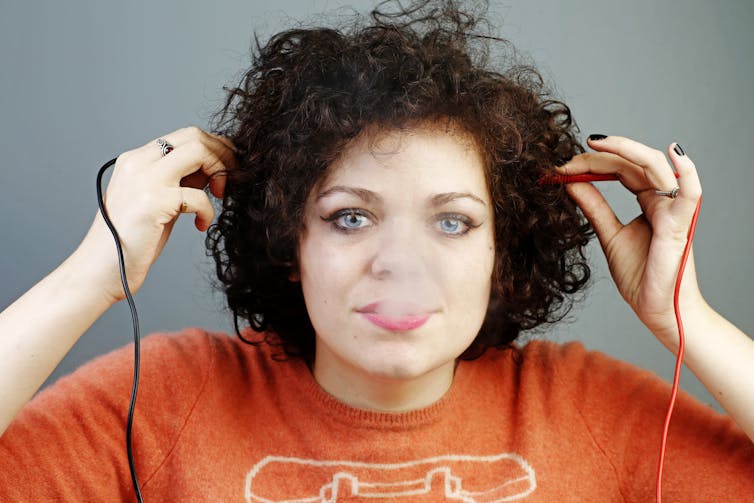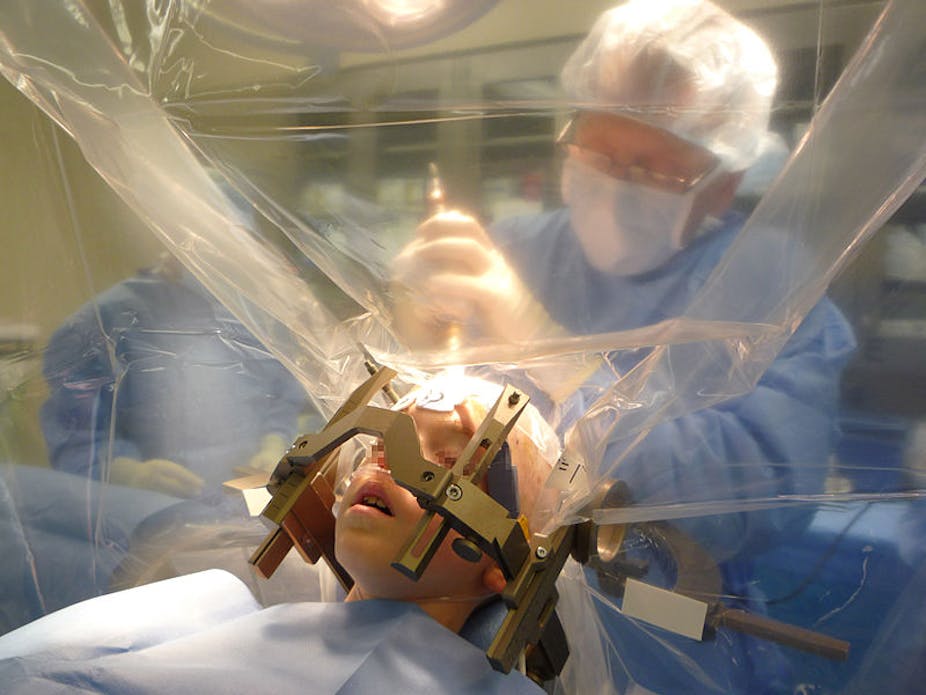Our complicated emotional lives can often feel like a prison. Insecurities, depression and anxiety can all hold us back in life. But what if we could just eliminate the mental states that we don’t want? Or enhance the moods we do? There’s every reason to believe that this may be commonplace in the future. In fact, a lot of the technology that could achieve this already exists.
More than half of us will have experienced an extended period of sadness or low mood during our lives, and about a fifth will have been diagnosed with major depression, although these figures depend a lot on the culture in which you live. The fact that mood disorders are so common – and also so difficult to treat – means that research into the future of mood modulation is constantly evolving.
If you go to a doctor in the UK with suspected depression today, you will start on a pathway of care including “talking cures” such as cognitive behavioural therapy, or drug treatments including serotonin re-uptake inhibitors like Prozac. People who do not respond to these treatments may progress to heavier regimes or combinations of drug treatments. Since most psychoactive drug treatments are associated with side effects, there is pressure to develop new treatment options that are better tolerated by most people.
What other options might be out there? In the near future we are likely to see a wider use of non-invasive brain stimulation. The technique uses magnetic or electrical energy to cross the skull, and to change the activity of the brain. Since people with depression sometimes show an imbalance of activity between the left and right frontal lobes, one possible, and promising, treatment may be to “rebalance” the hemispheres using the stimulation. The method appears to be relatively safe and free of the side effects that are associated with drug treatments. What’s more it’s a cheap technology that can even be made at home (although I would not suggest that you try).

Unfortunately this kind of stimulation can only reach the outermost surfaces of the brain’s cortex. Not all areas of the brain that are affected in depression are so convenient to reach. In these cases a surgical technique called deep brain stimulation may help in restoring function in people with mood disorders. Deep brain stimulation involves drilling a small hole into the skull, and inserting fine electrodes into the target region of the brain. The technique has been used with some success in treating Parkinson’s disease, and is being tested as a treatment for several other disorders. However, the procedure is still a risky surgery, and side effects may include stroke or seizures.
Another route to improving brain function might be neurofeedback. In a typical neurofeedback session a person sees a representation of their brain activity on a screen, and learns to raise or lower this activity through training. Neurofeedback has been used to alter the ratio of lower-frequency theta waves to higher-frequency beta waves in treating ADHD. Although neurofeedback has been tested in treating depression, the usefulness of this method is not yet clear.
Treatment versus enhancement
So far we have seen what happens, or may happen, when a person is diagnosed with clinical depression. But what if you’re just feeling a bit low? Or maybe you feel fine but want to feel even better. Can these techniques be used for what we might call “cosmetic mood enhancement”?
We recently showed that non-invasive brain stimulation can provide a lift in mood in otherwise healthy, non-depressed people. The technology we used – transcranial direct current stimulation – is cheap and accessible to many people, so could it be used to provide a mood bump to anyone who needs a bit of a lift after a hard day? There are already products available that claim to use non-invasive brain stimulation techniques to modulate mood. Similarly, there are private clinics who will provide (for a fee) a course of neurofeedback training.
At present the evidence for the ability of some of these techniques to improve the mood of non-depressed people is pretty slim, and often no better than placebo. This is not to say that novel treatments should not be available, after all some people are happy to pay for homeopathic treatments even though there’s no evidence that they work.
However the notion of cosmetic mood enhancement leads to possible ethical questions. Do we fully understand the harms associated with mood modulation technology, and are those risks balanced by the potential benefits? For example, could a person become dependent on brain stimulation, just as people can become dependent on alcohol or drugs? What role do manufacturers and private clinics play in communicating and monitoring those risks? And is it fair for some (well-off) people to have access to mood modulation and not others?
Mood modulation in the future
We are only beginning to understand how to modulate mood with neuroscientific technology. It would be easy to get carried away with sci-fi speculations about “happiness chips” in the brain, or compulsory mood enhancement to promote worker efficiency, or even misery enhancement to make the worst prisoners suffer for their crimes. But with responsible development of this technology, we have the potential to enhance the lives of a great many people.

